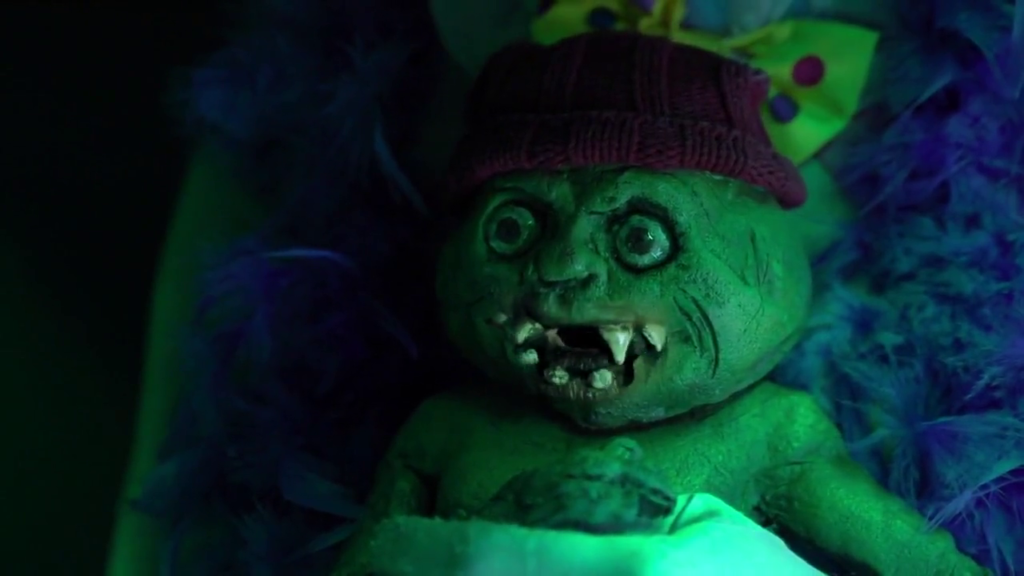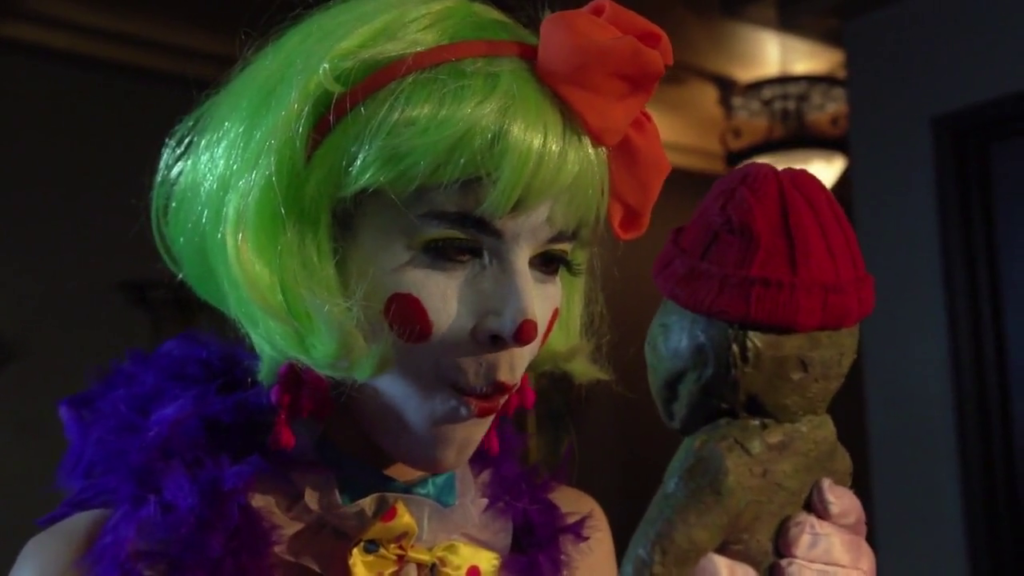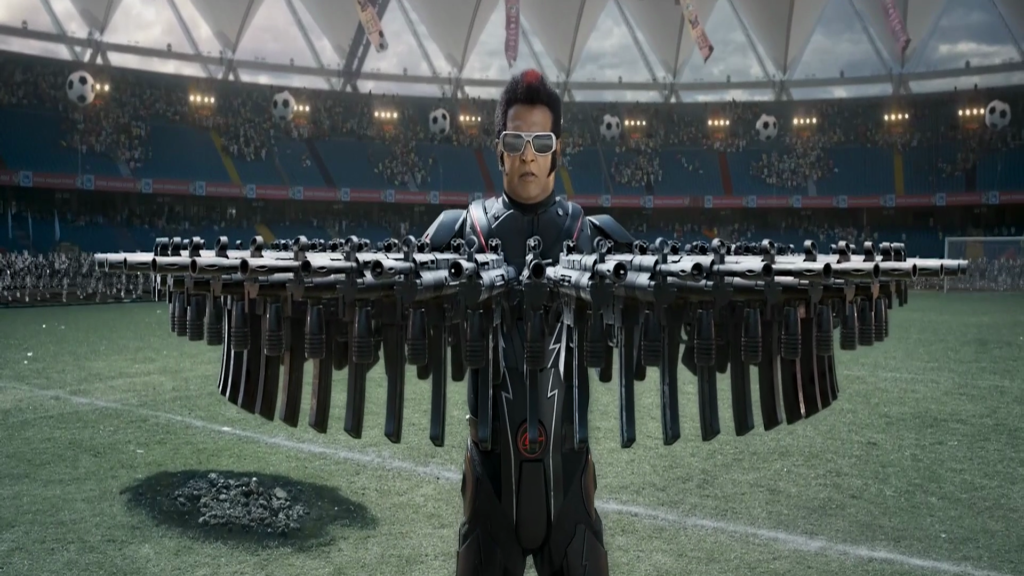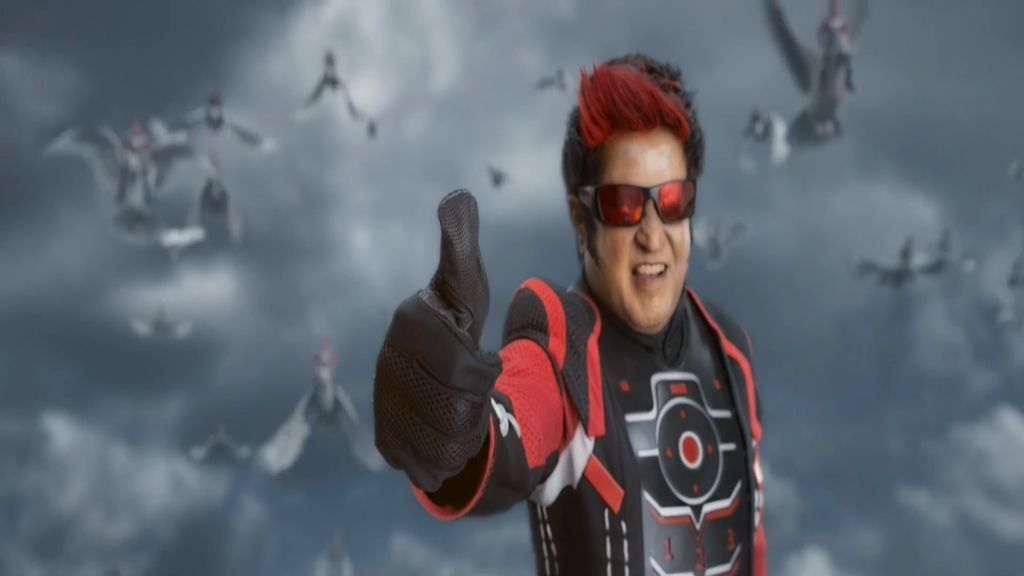-
#674 – Nekotronic (2018)










Nekrotronic (2018)
Film review #674
Director: Kiah Roache-Turner
SYNOPSIS: Sewer cleaner Howard learns of the secret battle between demons who infiltrate the real world via the internet, and the nekromancers who fight them. Learning that he himself is a nekromancer, Howard is reluctantly dragged into the battle between good and evil, as the whole world comes under threat from Finnegan, who seeks the power of the demons, and who just also happens to be Howard’s Mum…
THOUGHTS/ANALYSIS: Nekrotronic is a 2019 Australian sci-fi film. Howard is a sewer cleaner that is thrust into the battle between the demons that invade the real world via an app, and the nekromancers that fight them. Learning that he is a nekromancer himself, he must team up with others like him to stop Finnegan, who just so happens to be his Mum, from absorbing millions of souls and becoming immortal. The plot of the film clearly takes elements from Ghostbusters and The Matrix, with creatures coming down phone lines, and being trapped by the nekromancers. It never feels too derivative though, as it has its own brand of humour and silliness to drive things along. The mechanics of how everything works are very convoluted though, and you’ll probably end up glossing over some of the details. The film is driven by a lot of high-energy banter, action and swearing: lots and lots of swearing. Alongside this, there’s enough twists and turns in the story to latch on to which keep things interesting.
The characters of the film often feel a little under-utilised: Howard as the man who is introduced to this new world is who we relate with most, because we as the viewer often have no idea what is happening either. His friend Rangi, who dies and becomes a ghost (erm, wraith) provides some more mad cap energy, but doesn’t do a lot for a good chunk of the movie. Molly and Torquel have their moments too, but nothing outstanding. Monica Bellucci as Finnegan is clearly overacting for her life, and makes a fun villain, complimenting the silly, fun nature of the film. The practical effects are substantial and give the action a very tactile feel, and everything is very colourful, so it often never feels like there’s a dull moment. Nekrotronic is a mishmash of different ideas, inspirations and sometimes overwhelming mechanics and logic, but its high-energy, over-the-top antics typically overcome the convoluted elements. It’s humour is not sophisticated, and driven very much by banter and swearing, which is not going to appeal to everyone. It’s a silly, flashy and altogether messy experience that doesn’t offer anything new or substantive, but might be just entertaining enough if you appreciate it’s sense of humour.
-
#636 – Zoe (2018)
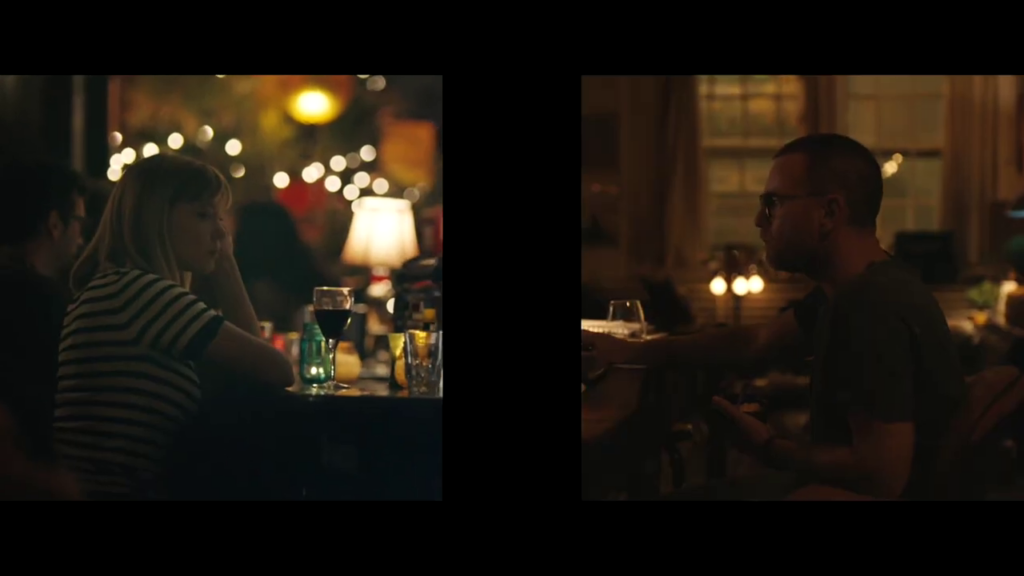






Zoe (2018)
Film review #636
Director: Drake Doremus
SYNOPSIS: In the near-future, a company is developing robots that serve as companions to humans, and also a surefire compatibility test to see whether people are made for each other or not. Zoe, who works at the company, takes the test to see whether she is compatible with her co-worker Cole, with whom she scores 0%. It turns out that Zoe is actually an android herself, but can love still bloom between her and Cole?
THOUGHTS/ANALYSIS: Zoe is a 2018 sci-fi romance film. A company in the near future is developing new frontiers in romance: human-like androids that can serve as companions, a drug that makes people feel like they’re in love temporarily for the first time, and a compatibility test that determines people’s romantic suitability for one another. Zoe, an employee of the company, runs a compatibility test on herself and another employee Cole, and it turns out to be 0%. She then learns from Cole that she is, in fact, an android, so will always score 0% with anyone. regardless, she starts a romantic relationship with Cole, and tries to make it work. The film takes on the typical and well-worn ideas of whether androids can love and such without much fanfare or a unique take on it. Combined with the aforementioned elements of the love drug and relationship compatibility test, you’ve got a blender of concepts that overlap with each other, and also fail to establish any depth to them as the backbone of the film. Zoe’s learning that she is an android provides a quite underwhelming response from her, and is not the interesting twist it could have been: it feels like the film just needed to get it out of the way so it could move on to the romance element, which actually does serve as the film’s spine. her insistence that robots can’t love because it’s all “zeroes and ones” is certainly challenged when she makes the discovery about herself, but again, it is lost beneath a heap of thing things.
The romance, again, is a bit muddled and doesn’t really offer anything significant or unique. One of the biggest problems I had was that Cole just isn’t a likable character, and is pretty awful really. The film does try to frame this as love being difficult and messy, but it reflects more on the messiness of the film rather than the characters, as there’s just not an intensity on screen between the actors, as every scene is mostly just hushed dialogue that fails to convey what it wants. There’s definitely some good ideas in here that could have been developed more roundly, but as they are, they fall flat. The ending offers an interesting twist, with it being left open whether the Zoe that Cole reunites with is the “real” Zoe or another android simply programmed to be her, but it’s delivered in such a slight manner that it doesn’t give space to interpret the significance of it. Overall, I can’t have too much good to say about Zoe: there’s too many different angles with too depth in the ideas department, the romance lacks the emotional impact, and it just never really hooked me at any point.
-
#632 – Replicas (2018)


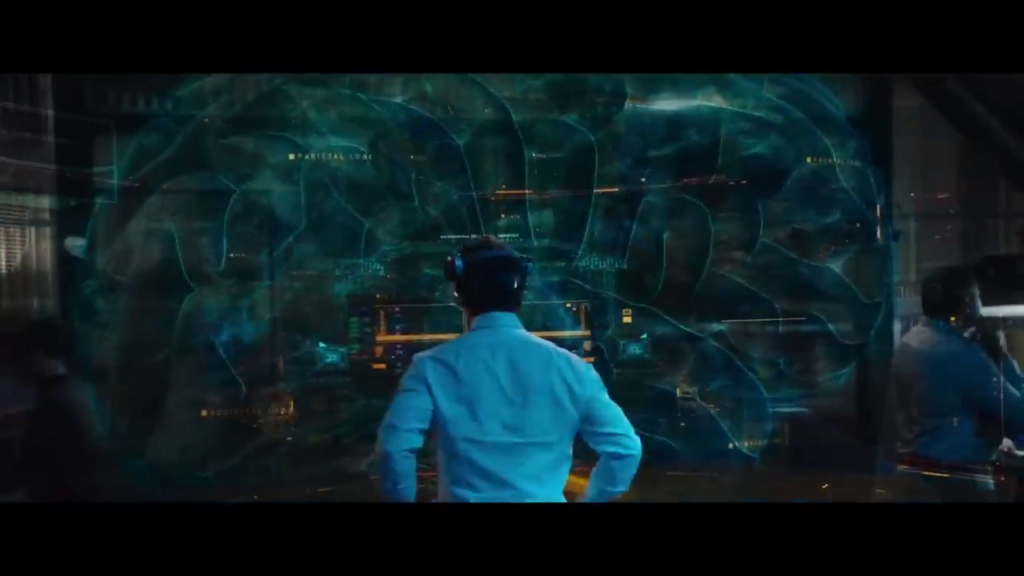






Replicas (2018)
Film review #632
Director: Jeffrey Nachmanoff
SYNOPSIS: William Foster is a scientist working on a project to transfer the consciousness of a person into an android body. When he is involved in a car crash with his family and he emerges as the only survivor, he decides to bring them back using his research of transferring consciousness, combined with cloning research being undertaken by his colleague. With the experiment a success, Will’s attempts to keep the secret from his family becomes ever more difficult, and when his employers find out about them, they see them as nothing more than experiments and test subjects, and Will must fight to save his family…
THOUGHTS/ANALYSIS: Replicas is a 2018 sci-fi film. Starring Keanu Reeves as Will Foster, a scientist who is working on a project to transfer human consciousness into an android body. Unable to figure out the final part of the problem, he is on the verge of losing his funding. During a drive, Will and his family are involved in a car crash, which kills his wife and three children. This leads him to come to the decision to copy their consciousness and to enlist the help of his colleague Ed Whittle, who works in cloning, to create new bodies for him to upload their consciousness too. If you think that’s an absolute mess of a premise, and a a bit of a stretch that the one guy who is working in uploading consciousness just so happens to have his own family killed in the most cliché car-crash-over-a-cliff-on-a-rainy-night. That his next step after dragging them out of the water is to think about cloning them new bodies is a bit of a stretch, and just makes him seen deeply unhinged, and not really the kind of guy you should be rooting for. I get that after such an event he is probably not thinking rationally, but the way he immediately comes to this decision without him ever having any success really just doesn’t flow narratively. Thematically, the way the film just jumps from androids to cloning is a bit disjointed too: you could easily just pick one or the other, but here they’re just put in a blender and thrown about all over the film, never approaching either subject with consideration or depth. You could certainly make a film that deals with the concepts of mind (consciousness) and body (cloning), which I think is maybe what the film is trying to do, but it nowhere near makes any kind of point on it.
Will erases the parts of his family’s memories of the crash, so they don’t remember, and because he only has three cloning pods and can’t clone their youngest daughter, has to erase their memories of her as well. This is where the plot-holes start to really pile up, as Will has to wipe out all trace’s of his Daughter’s existence. He can perhaps erase the memory of his family members by deleting parts of their memory, but what about everyone else that knew her? Her school? There is no way he could have thought this was going to work, and the film barely addresses it. Again, we have to accept he is not exactly thinking rationally, but the fact that he does attempt to account for his family’s absence by contacting their schools, employers etc. shows that he is aware of the problem. It just seems that the film ignores the huge task it opens up to itself with this.
Keanu Reeves is not the ideal lead for this sort of film: if you’re not going to adequately dive into the philosophical issues surrounding cloning, consciousness, evading death and the like, then you need to be able to deliver an emotional impact and show the grief that the lead is going through having lost his family. Unfortunately, Reeves just cannot deliver that level of an emotional performance. Combined with his wholly illogical and unhinged behaviour, and it makes it difficult to root for him or understand what is going on in his head. The finale of the film has Will and his family on the run as the company Will works for wants his family eliminated, as they are experiments that have fulfilled their usefulness. This whole action sequence just feels unnecessary too; there’s no build up to this, or any similar sequence earlier in the film, so it just comes out of nowhere. It tries to build up to something, then just…stops, as Will and the villain reach a deal, and everyone just lives happily ever after. After the absolute mess of the film and Will’s absurd decisions, the fact that everything’ ends well is perhaps the biggest leap of all. The CG is all really bad too: as the android moves about in such an awkward way there’s no way you’ll believe the actors are actually interacting with it.
-
#628 – Mortal Engines (2018)


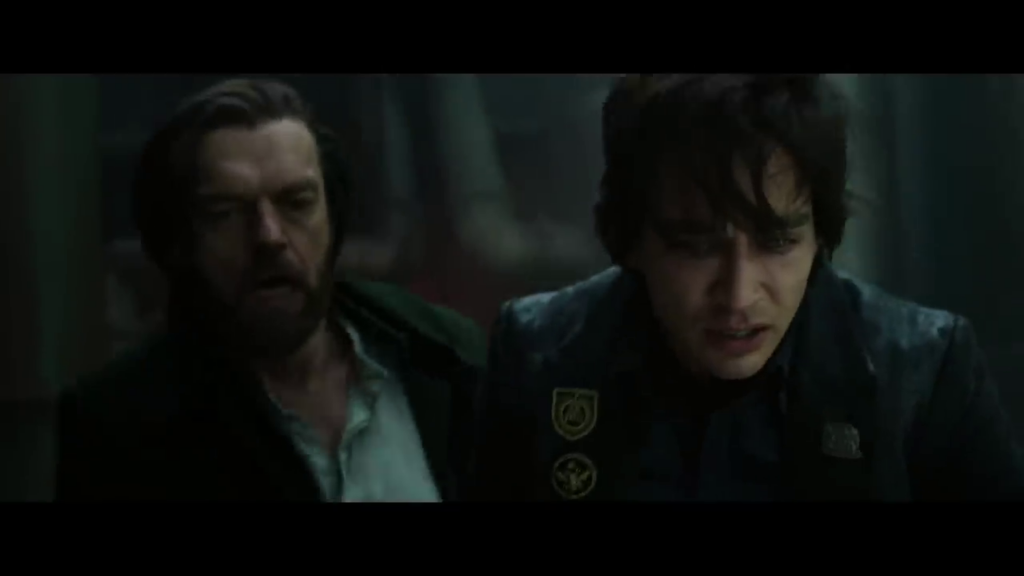







Mortal Engines (2018)
Film review #628
Director: Christian Rivers
SYNOPSIS: A thousand years in the future after a great war, giant mobile towns and cities roam around the continent, attempting to absorb one another for resources. In the mobile city of London, a small mobile town is harvested, among the population is Hester Shaw, a young woman who attempts to assassinate Thaddeus Valentine, a high ranking member of the city, but is stopped by Tom Natsworthy, a young historian. When Thaddeus learns that she told Tom about how he killed her Mother before she fell down a chute, Thaddeus pushes Tom down too, hoping to eliminate any evidence. With Hester and Tom cast out of the city as it rolls away, they must find a way to work together and get back to London before Thaddeus can complete his secretive project…
THOUGHTS/ANALYSIS: Mortal Engines is a 2018 sci-fi film based on the novel of the same name by Philip Reeve. Set a thousand years in the future after a “sixty second war” obliterated the old world, humanity now lives on large mobile cities and towns that move across the continent capturing other towns and cities for scarce resources. London is one such city, and after capturing a small mining town, takes the residents aboard including Hester Shaw, a young woman who attempts to assassinate Thaddeus Valentine, a high ranking member of the city. She is stopped by Tom Natsworthy, a young historian, who chases her down, and reveals to him the secret that Thaddeus killed her Mother before she falls down a chute. When Tom tells Thaddeus this, he is also pushed down the chute, seemingly to erase the evidence. Cast out of London as it rolls away, Tom and Nester must learn to work together to learn the truth and stop whatever Thaddeus is planning. The film starts off, as most of these post-apocalyptic films do, telling how civilisation was wiped out in a war, and introducing the novel concept of mobile cities that move around like giant tanks swallowing others for resources. We get a fairly standard action sequence to kick things off which illustrates the concept well, but perhaps lacking that necessary hook to grip viewers.
The two main flaws of the film quickly make themselves known, in the first twenty minutes we are introduced to character upon character, thrown at us relentlessly. The cast is just far too large, and we don’t really get a strong main character to settle us into the world, and are rather just thrown around a lot. The second issue which stems from this, is that everyone we meet already has a history with everyone else, which just complicates everything tenfold. This feeds into a plot which is tied together with a mass of conveniences, where characters coincidentally meet who just happen to know each other in some way. There’s nothing organic about the development when all of this is just shunted into the film and we as the viewer are made to play catch up as the film explains the nature of their relationships, rather than letting it happen in the present on screen. The two main characters have that very typical relationship of hating each other and eventually getting closer, and you can easily predict every beat in their relationship and when it’s going to happen, draining any chemistry between them. Thaddeus isn’t really much of an interesting villain either, as his plan just seems to be to blow up a wall so he can go and pillage some non-moving cities in east Asia, but we don’t ever see any of them, or what they’re like, so we don’t really get a sense of the consequences of his actions other than blowing up a big wall. Hugo Weaving still turns in a good performance as you would expect, but he just doesn’t really have anything special to do, like most of the characters.
I haven’t read the book, so I’ can’t comment too much on the themes there, but the film does have a theme of “Municipal Darwinism,” with the strong cities absorbing the weak and their resources in order to survive. An interesting idea, but only really mentioned once in the opening and never really explored. There’s also a sense of nationalism/colonialism in having the populations of these cities cheer on as they watch “their” city destroy another, which again is hinted at in the opening and a bit at the end, but never really dug into or forms any part of the plot. I feel this is something that would have been interesting sub-text in the novel, but maybe was flattened out to make the film more Hollywood and devoid of any metaphor or controversy. These might also have had more weight if we saw more than one mobile city throughout the entire film. What happened to all the other big cities? Wouldn’t it have been interesting to see London take on Paris, or any other major capital? As it is, there’s not even a mention of them.
Produced by Peter Jackson, as the trailers are at pains to point out, he lends his skills well to the big battle scenes, and the visuals are good for them. Jackson hired Philip Reeve for his directorial debut to work on this film, and the inexperience certainly shows in all the points mentioned above. There’s plenty that could have been done with this film, I am sure, but as it is, it is a meandering two hours around half-baked plot points connected by huge coincidences and a bloated cast. It fails to make up for the weak plot as well with a lack of excitement, action, humour, or anything else really. Clearly everyone else felt the same, as it was a box office bomb against a huge budget. Mortal Engines stalls before it ever gets anywhere good. The historian characters remark that somehow history is not as they know it, and that it seems to have been changed somehow. I assume this is because the plane has travelled back, but it just seems like an excuse not to be historically accurate (such as the German planes used not being in use until 1942).
The characters are all fairly bland and a typical cast who react to the situation differently. Acting is weak, and we don’t really get any insight into the lives of these characters other than the tropes they are meant to be.
-
#626 – Pacific Rim: Uprising (2018)



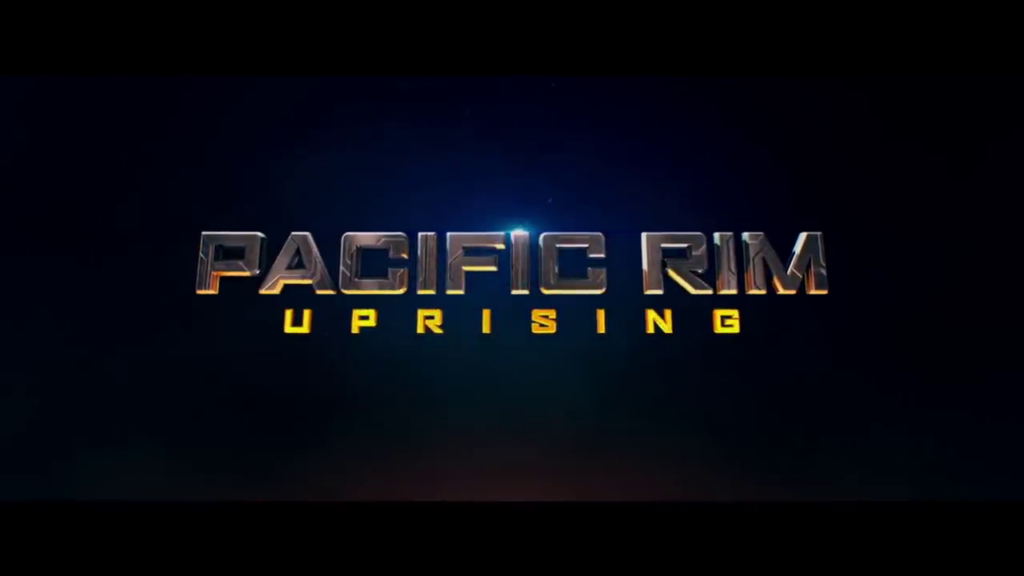


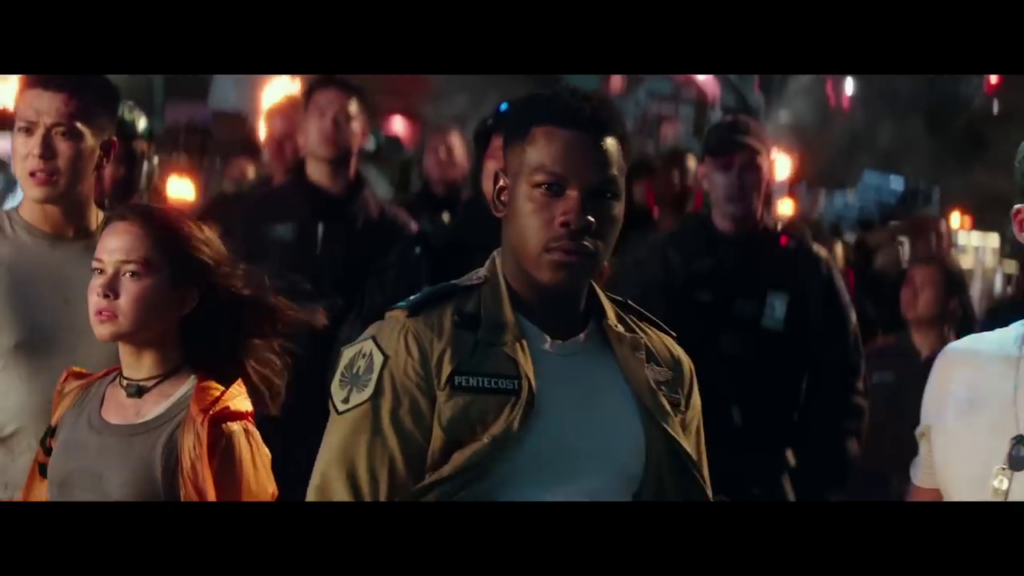



Pacific Rim: Uprising (2018)
Film review #626
Director: Steven S. DeKnight
SYNOPSIS: Ten years after the war of the Kaijus was won and the rift through which they came was sealed, pilot Jake Pentecost is living in ruined Los Angeles selling giant robot (Jaeger) parts. When he has a run-in with a girl named Amara who has been illegally building her own Jaeger from scrap parts, they are caught and given a chance to make up for their crimes: Jake is to train a new generation of pilots, and Amara is to join as a cadet. Both are put to the test however, as a new threat emerges…
THOUGHTS/ANALYSIS: Pacific Rim: Uprising is a 2018 sci-fi film and the sequel to 2013’s Pacific Rim. Set ten years after the vents of the first film, in which the rift through which the giant kaiju monsters was sealed, we see the hero of the first film Jake Pentecost living in the ruins of a Beverly Hills luxury home, as he narrates how the intervening ten years have led to people illegally building their own Jaegers (giant robots used to combat the alien kaiju), and an emerging black market for parts to do so. Jake runs into a young girl named Amara Nanami, who is secretly building such a Jaeger, and when the two of them are caught, are offered a deal to keep themselves out of trouble: Jake is brought back to the academy to train new recruits, and Amara joins as one of said recruits. While behind the scenes some suspicious activity with a company wants to use artificial drones to pilot the Jaegers leads to a new threat and the new recruits having to step up to save the world. The story splits itself into two as we follow both the protagonists doing slightly different things: there’s absolutely no surprises here, and everything unfolds more or less how you would expect it to. There’s just this overwhelming feeling that nobody really knew what to do with the story here: just re-opening the rift and fighting kaijus would have been a direct copy of the original and rendered the victory of the first film somewhat meaningless, so it’s good they just didn’t do that. The trouble is that what they did do is to half re-hash the story by returning to newcomers and training a different generation of pilots anyway. The new story regarding the use of drones to artificially pilot Jaegers is somewhat interesting, but is more or less blown away and discarded when the “real” threat emerges. All in all, it just feels directionless.
The story is obviously not what you’re watching this film for I suppose: you want to see giant robots beating giant monsters, and you do get it…eventually. One of the big differences between this film and its predecessor is that the big fights take place during the day, whereas in the original it was all done in the dark and usually rain. This was one of the common critiques of the first film that you couldn’t really see what was happening during the fights, so it’s good that they actually revised that. There was something quite atmospheric about the night time fights, but I can see why they would choose to avoid that criticism entirely this time around. The characters have reasonably good chemistry, such as between Jake and Amara, but the development of their relationship is so predictable, and at the start of every scene between them you can work out how it’s going to end up. The characters from the first film too don’t really get that much development either, and due to the five year gap between films, I couldn’t really remember who any of them were. There’s just little effort to reconnect us to the characters or expand upon them.
Given that Guillermo del Toro stepped away from directing this film as he did the predecessor, it does suffer from his absence (he directed the Shape of Water instead, which won him multiple awards, so a good move on his part at least). The action scenes are decent and entertaining, but don’t really have much flair. The Jaeger and Kaiju designs aren’t memorable or leave an impression, and again, the effects are okay and solid enough, but don’t stand out. Pacific Rim: Uprising fails to build upon its predecessor; stumbling around well-trodden story beats to try and distinguish itself form the original, but just never achieves that aim. Some of the characters have chemistry, but it’s all done in such a cliché manner that you don’t even need to see it; the predictability of all the dialogue is nauseating and feels like a waste of time. The fight scenes are entertaining enough, and are obviously what carry the film, but everything else is directionless and muddled. Overall, a lack of ideas overshadows the film, but like the original it’s an okay action film. Although that said, you’ll probably want to watch the original over this one, as it at least was self-contained and didn’t have the pressure of re-treading old ground like the sequel has to.
-
#596 – 3ft Ball & Souls (2018)










3ft Ball & Souls (2018)
Film review #596
Director: Yoshio Kato
SYNOPSIS: Four people arrange in an online chat room to undertake a group suicide. They meet in an isolated shed where one of them has brought a huge ball of fireworks to explode along with them. When the last person arrives, they realise that she is just a high school student, and the three other adults try to talk her out of it. She refuses and sets off the fireworks, but this sends the other three back in time as they all arrive at the shed. They deduce that the reason they are being sent back is because that Tsukiko, the schoolgirl, is there, and so they try and persuade her to leave before they can end their own lives…
THOUGHTS/ANALYSIS: 3ft Ball & Souls is a 2018 film. The setup of the film is fairly simple: four people, who meet in an online chat room, and agree to commit suicide together. Meeting up in a shed, one of the participants brings with him a huge fireworks ball, which he intends to explode with them all inside the shed. One by one the people arrive, until the final person arrives: a schoolgirl named Tsukiko. Uncomfortable with her joining their plan, the other three try to convince her to leave, but she is adamant she wants to go through with it, taking the detonator and setting it off. This, however, causes time to go back to before everyone gathers. As time loops at this point again and again, the three people believe that the loop is being caused by the schoolgirl’s presence, and try to convince her to leave so they can break the loop. The premise of the film is fairly simple: taking place almost entirely in this small shed, the three participants try to convince the schoolgirl to leave, with each participant recognising they are in a loop at different points of the film. The story takes an in-depth look at it’s topic of suicide that is serious and frank, with a sprinkle of light-humour to round out the characters. The sparse and limited setting supports the tone by proving few distractions, and setting the four characters around this giant ball of fireworks, which leaves them little room to hide.
As the film progresses, we learn a little about each of the characters and the reasons which have led them to this point. The story is well paced and provides enough insight into each of the characters to get you into their state of mind. The irony of these three people so willing to end their own lives trying to convince Tsukiko to not do it herself is not lost on the film, and even though everyone is the same position, they are still there for vastly different reasons, so their words don’t necessarily resonate with one another.
The film’s weaknesses are that while the film does have an in-depth dive into the topic of suicide, it lacks a kind of profound emotional depth that I think it wants to go for. It has it’s moments for sure, but overall it’s missing something to tie everything together. maybe it’s because the characters all have these very distinct personalities and reasons for being there with no overlap, which makes it obvious they are actual scripted characters. There’s also a very cultural aspect of how suicide is perceived and dealt with in japan, so you might miss a certain element of the film if you’re not well-versed in it. I think the weakest aspect of the film is the ending. Without spoiling, it ties everything together a bit too neatly, and it is one of those rare films where it would have been better if the film ended about five minutes earlier in a more ambiguous way that was still positive, but without over indulging the point. The strongest moment of the film comes near the end, when the three participants have run out of reasons and arguments to dissuade Tsukiko from going through with it, being left with the sole reason that they don’t want her to.
Overall, I thought 3ft Ball & Souls was a good film that has a good story that is well told and set up; dealing with a topic that is hard to deal with. The characters play well off of each other, and have a decent amount of depth too. The ending is a bit too simplistic and well-rounded to really gel with the rest of the film, but it doesn’t detract too much from the net positive of the film’s story, pacing and characters.
-
#587 – Goosebumps 2: Haunted Halloween (2018)










Goosebumps 2: Haunted Halloween (2018)
Film review #587
Director: Ari Sandel
SYNOPSIS: Teenager Sarah Quinn is struggling to write an essay for her college application. Meanwhile, her brother and his friend find a mysterious book at an abandoned house, which when opened releases Slappy, an evil dummy, to appear. Slappy is more than just a dummy though; he is alive, and sets about unleashing all sorts of monsters just in time for Halloween. It’s up to Sarah and her brother (and his friend) to stop Slappy before he unleashes pure chaos on the town…
THOUGHTS/ANALYSIS: Goosebumps 2: Haunted Halloween is a 2018 film and a sequel to the 2015 film Goosebumps, based on the series of horror stories written by R.L. Stine. Set three years after the first film and in a different location, we see teenager Sarah Quinn trying to write her college essay, but is constantly distracted by her Mother wanting to babysit her brother and his friend, who is stopping with them over Halloween. The plot revolves around Slappy, the evil dummy who was the villain the previous film, being released from one of R.L. Stine’s unfinished books, and does what he does best: unleashes monsters and horrors of all sorts to terrorise the town, leaving Sarah and the others to stop him. The plot is very similar to the first film, but while the first one managed to offer a twist that made things interesting with the Goosebumps books themselves forming part of the story, here that little unique twist is absent. The film revolves around an unfinished story by R.L. Stine called “Haunted Halloween,” which apparently was an early book that was very rough and unfinished, so the monsters that are unleashed have that feeling of being unpolished. This does, however, have the feeling of making the film also rough and incomplete, with the story feeling very weak and uninspired. There’s certainly a way to make the premise work without it bleeding into the quality of the film itself, but as it stands, the film ends up being feeling underdeveloped, and desperate in needing a good rewrite or two.
The characters are all fairly unremarkable: while the first film was the same, it had Jack Black as R.L. Stine to bring everyone together and inject enough energy to keep things interesting. Here, we get no such thing: Jack Black does appear in a scene halfway through and at the end to somewhat explain everything, but in teasing him in this way without actually doing anything probably hurts the film more than anything. While Jack Black was such a prominent role in the first film, here, it would probably have been better if he wasn’t in it at all, if all he does is show up at the end and explain everything, leaving a feeling of disappointment you’re not going to see him do anything interesting. The whole subplot about Slappy wanting a family wasn’t something that was a part of the first film, so it just feel like it comes out of nowhere, and doesn’t further his character in any way. Overall, Goosebumps 2 is a very unpolished film that fails to get going in any way: the enjoyable elements of the first film are gone and we are left with a predictable, low-stakes story that offers nothing that the previous film didn’t.
-
#439 – Evil Bong 777 (2018)
Evil Bong 777 (2018)
Film review #439
Director: Charles Band
SYNOPSIS: After escaping “Sexy Hell”, Rabbit, Ebee and the rest of the gang decide to head to Las Vegas to escape the wrath of Lucy Furr and Beelzebud, but the two are hot on their heels to take their revenge…
THOUGHTS/ANALYSIS: Evil Bong 777 is the seventh and final (to date) instalment of the Evil Bong film series. Continuing from where the previous film left off, we see Rabbit, Ebee, Misty, Batty Boop and the Gingerweed Man escaping from “Sexy Hell” and the clutches of Lucy Furr and Beelzebud. On the run, they decide to flee to Las Vegas. The plot of the film basically revolves around the cats just…doing stuff in Las Vegas: they go and see a show (an excuse to show some nudity), they check into a grubby hotel and…well, that’s about it. The film really has no plot, like most of the other films in the series. Every scene is just a chance for either some crude nudity or extended, inane dialogue that goes nowhere. There’s not even a real plot to the film: Whereas in the previous films had some sort of scheme by the evil bong to take over the world, here she just hangs about in the background interrupting with some dismissive comments every so often. Lucy Furr’s plan to escape Sexy Hell doesn’t have any consequences either, as she never seems to have a plan with what to do when she gets out. The series clearly ran out of ideas several films ago, and spends most of it’s runtime on this inane dialogue I have come to expect from the series, and at a runtime that is less than an hour, the bankruptcy of ideas is very apparent.
The characters from the previous film return, but the original cast of college roommates are long gone and forgotten. The only characters that have appeared in all the films are Rabbit and the Evil Bong herself. I suppose if I were to find a positive in this film, it is that each of the cast has something to do and their own dedicated scenes. None of these scenes really tie into anything in the grander narrative, because as mentioned there is no grand narrative. The inclusion of other characters from other films made by Full Moon Pictures makes things even more confusing if you haven’t watched them. The gag characters of the rednecks and stoner pairs return for their predictable schtick that adds a little energy to the dialogue. There’s also two new creatures made from the Gingerdead Man’s corpse, but they only re-appear at the end of the film to perhaps set them up as the villains of the next film, which has to date not materialised. Introducing the halfway through the film and having them show up only at the end again feels like another pointless endeavour.
One common theme throughout these films is the lack of settings. Evil Bong 777 has a few different ones, but they’re either pretty sparse, or they’re obviously greenscreened. You definitely never get the sense that they are actually in Vegas. There’s perhaps some attempt to push the series through more absurd and in-your-face nudity and sex scenes, but they don’t really tie into anything. Whereas the previous films might have gotten one or even two mild chuckles, this one didn’t even get that: Evil Bong 777 is really running on fumes in terms of its story, characters and humour. As such, it is not going to appeal to anyone, but I suppose if you’ve suffered through the rest of the films (as I have), you might as well suffer through just one more…
-
#350 – 2.0 (2018)
2.0 (2018)
Film review #350
Director: Shankar
SYNOPSIS: Dr. Vaseegaran, an expert in robotics and artificial intelligence has developed a new robot named Nila, after his older robot Chitti went on a murderous rampage and was disassembled. When everyone’s mobile phones start flying away of their own accord, it turns out to be the work of the spirit of Pakshi Rajan, who is using them to stop their overuse from killing birds. With no way to stop him, Vaseegaran suggests reactivating Chitti, as he is the only one strong enough to defeat this new menace…
THOUGHTS/ANALYSIS: 2.0 is a 2018 Indian science fiction film and the sequel to the 2010 film Robot. The film opens with Dr. Vaseegaran introducing his newest robot Nila to a group of students. Shortly thereafter, people’s mobile phones throughout the city begin flying away of their own accord. Without these phones, the city is in a state of chaos, and attempts to bring in new phones are met with suspicious accidents. The phones then combine to take the form of a giant bird, which causes more chaos by uprooting signal towers. Vaseegaran suggests to the government to reactivate Chitti, but his murderous rampage that was the result of an upgrade means they are reluctant to do so. When the military fails to resolve the situation, the government then gives Vaseegaran permission to reactivate Chitti to counteract the mobile menace. The plot of the film is fairly robust, with a good amount of time dedicated to all the characters, with some decent set pieces that give the action scenes the space they need to stand out, as well as a decent amount of character development.
One issue that arises with the story is the pacing and it’s organisation: some scenes go on for too long and put the film into a bit of a slump that make it lose focus through its inconsistency. The big example is when Chitti encounters Rajan (or his energy spirit…thing) and asks what his motivation is. This leads to a twenty minute flashback essentially telling his life story. I think the aim is to get the viewer to empathise with his message about how mobile phone signals are killing the birds, and will ultimately endanger our own existence, but this could have been done in a much more interesting and provoking way other than this biographical picture of a villain to make us feel sorry for him. Rajan’s kill count in this film is pretty high, and is portrayed with a very evil look, so ultimately he is being played as a straight, typical villain that doesn’t really need this backstory. His whole life being centred around birds from the moment of his birth onwards also makes him seem like a very one-dimensional character. The rest of the cast are given just the right amount of development, and the performances are all pretty good, with characters from a number of different perspectives on the events that are transpiring. One character that doesn’t serve much use is Dhina Bohra, the son of one of the villains who was killed in the first film. He serves as a good reminder of Chitti’s legacy in the first part of the film, but his part gets muddled and loses it’s way as the film progresses.
The message of the film concerning the effect of mobile phone signals on birds is not a subtle one, and I have absolutely no idea how much of it is true or not, which makes the message even more confusing. The film does try to explain how and why everything is working, even when it probably doesn’t need to. The explanation of Rajan’s spirit being a 5th form of universal energy that is binding together the mobile phones is needlessly complicated, but probably should be commended for its effort in elaborating on details. Any criticism of the subtlety of the film’s message should also be balanced out by saying this is not a subtle film in any other regard either. Like it’s predecessor, 2.0′s biggest strength is its over-the-top action sequences that defy reality, logic and sense. Again, this contrast with the exasperating exposition of the antagonist give the film a very uneven feel in places. Nevertheless, the action itself is pretty solid, with some implausible stunts and plenty of destruction. The fights are also pretty varied, with the first fight of Chitti after reactivation showing off Chitti’s strengths, then after Rajan possesses Vaseegaran’s body, Chitti cannot defeat Rajan because it would also harm Vaseegaran, and conflict with his programming against harming another human. With this in mind, Nila activates Chitti 2.0, the upgraded version that caused the destruction of the first film, as it is the version that would not be averse to harming a human. This version partakes in the more absurd action, with an army of Chitti robots combining to make a giant ball of machinegun fire and even a giant bird cage to trap the giant mobile phone bird. Some of the sequences feel a bit similar to the first film (the “Chitti ball” for example), but it’s more of what made the first one so memorable and entertainingly insane, so that’s not too much of a problem. The special effects that support the action are also well done, and while not as good as the top Hollywood films, still deliver a credible, colourful and visual treat.
Overall, 2.0 continues the story of Robot with more of the excessive action that made the first film so good. The direction and set pieces of the action sequences deliver an entertaining bit of cinema, even if it does not evolve too much from its predecessor. Away from the action, the film suffers an uneven pacing with too much focus on the villain’s backstory and his motivations that drain the film of it’s energy for some time before it can regain its momentum. Apart from that, there’s plenty of content and story to fill it’s runtime, so it’s a worthwhile watch.












